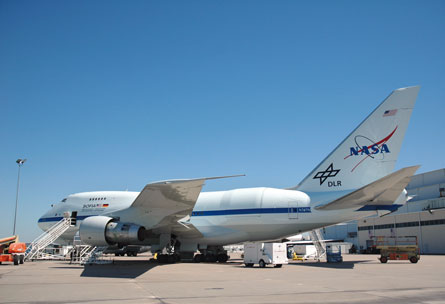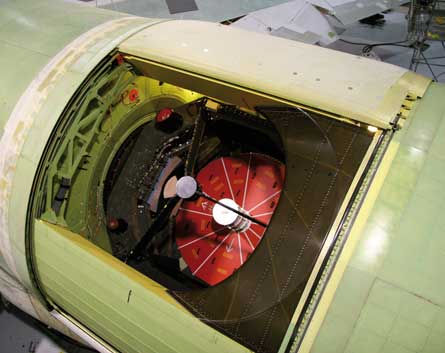Delayed telescope project poised to take off next month
NASA and L-3 Communications plan to hold a first-flight readiness review meeting this week for the Stratospheric Observatory for Infrared Astronomy (Sofia) Boeing 747SP widebody.
The first flight is expected around the end of March and represents a turnaround in fortunes for the long-delayed Sofia airborne telescope programme.
|
|---|
The Sofia telescope will undergo a "door closed" flight test by year-end on board the modified Boeing 747SP |
|
|---|
Begun in 1996, Sofia was originally due to enter service in 2001. However, the project was put on hold in February 2006 and zero-funded for fiscal year 2007 after a series of technical, programmatic and budget problems.
But after protests from the scientific community and complaints that much of the conversion work had been done, NASA administrator Michael Griffin announced in July 2006 that the agency planned to complete its development. NASA's Program Management Council concluded that there were "no insurmountable technical or programmatic challenges to its continued development".
Following first flight from L-3's Waco, Texas site, the 747SP will "ferry to Dryden [Flight Research Center] in late April", says NASA Dryden Sofia programme manager Bob Meyer. After arrival in California the aircraft will complete a series of flight tests, culminating with a "door closed" flight-test phase before the end of 2007. This refers to the large sliding door section in the aft fuselage covering the aperture for the German-built 2.5m (8ft)-diameter infrared telescope.
"Then we will start tests of new subsystems in the observatory and, in late 2008, we will start the 'door open' flight tests," says Meyer.
In 2009, NASA plans to complete the basic test work and move on to observatory/telescope classification tests. "They will be the 'first light-in-flight' tests, that's what we hope," he adds.
Items expected to be integrated at Dryden include installation of the cavity insulation, work on the cavity environmental control system, the cavity door system, installation of mission control and communications systems, and coating of the primary mirror.
Under the rejigged Sofia programme, Dryden has assumed responsibility for the aircraft development and tests, and will host the programme office. NASA Ames, which originally held these roles, will continue to lead the science mission operations element of the project, which is a joint development with the German aerospace centre DLR.
Sofia's science and mission operations are being planned jointly by Universities Space Research Association and the Deutsches Sofia Institut.
Source: Flight International

























